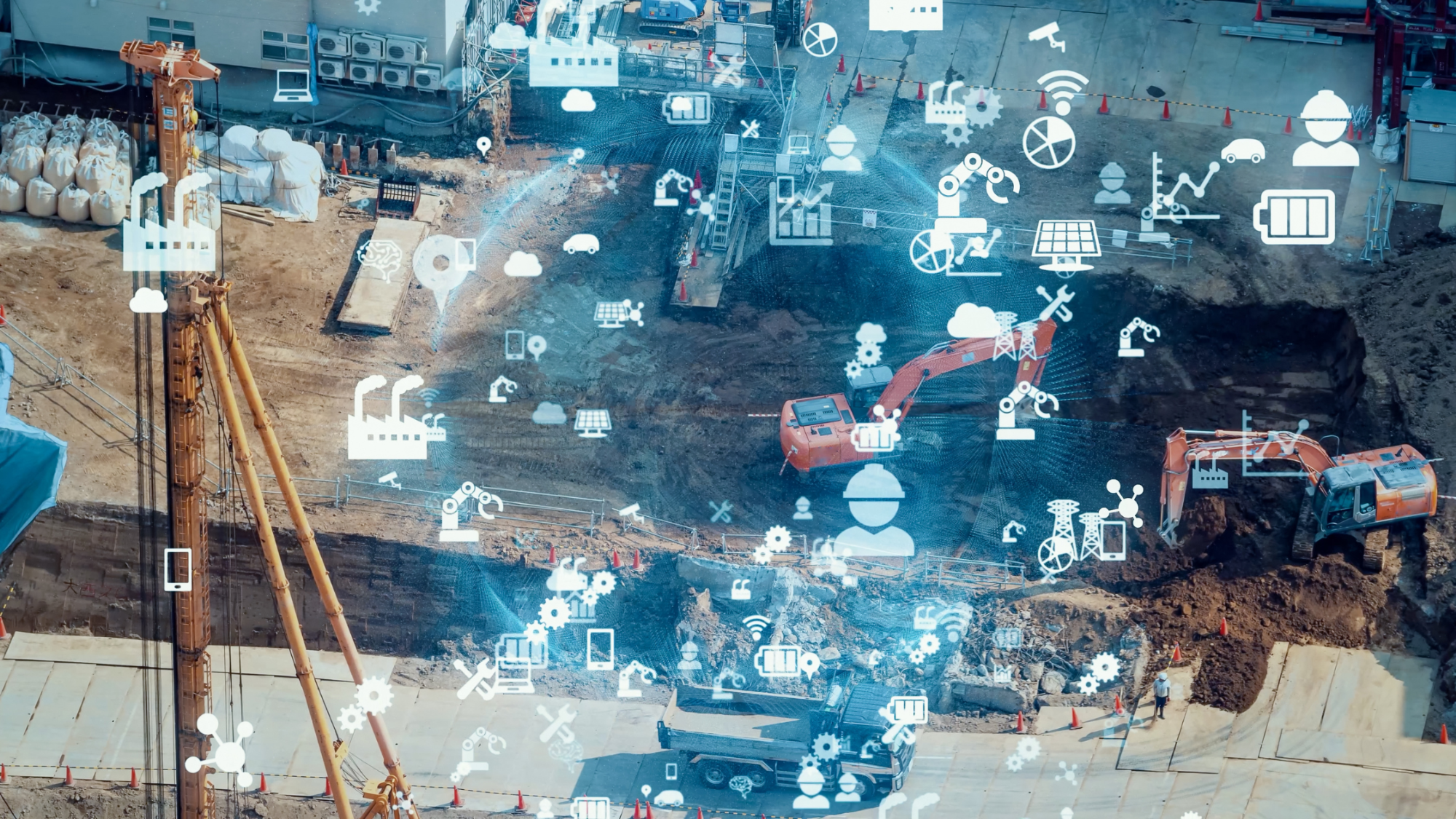How generative AI is transforming how we design, build, and work

This blog post was written with the help of generative AI
Generative AI for construction
When we think of generative artificial intelligence (AI), the first thing that comes to mind is usually copywriting, for social media, websites, and blogs. But this powerful technology has a vast range of applications beyond just creating content. The architecture, engineering, and construction (AEC) industry is beginning to embrace the potential of AI and machine learning.
As a strategic digital marketer, I spend a significant amount of time researching emerging trends in the digital world. With over 15 years of experience in the field, I've seen the constant evolution of digital tools and technology. However, I have not seen anything as transformative and disruptive as generative AI since the iPhone.
Generative AI, like ChatGPT and Jasper.ai, have been creating immense buzz and a mix between excitement and fear over the last eight or so months. This revolutionary form of AI employs sophisticated algorithms to analyze patterns and generate new content, including images, text, and music. Its popularity has soared because it has the capability of producing original, high-quality content in a short amount of time, saving valuable resources for businesses. By leveraging generative AI, companies can quickly create bespoke content that is tailored to their audience, which can lead to more significant customer engagement and satisfaction.
The AEC industry is using generative AI to generate multiple design options for buildings, bridges, and infrastructure projects. By inputting specific parameters, such as materials and budget, the technology can create various design possibilities that meet the project's requirements. This process not only saves time but also allows for more creative exploration in the design process.
Generative AI can also optimize construction schedules and resource allocation. It can also analyze data and predict the best time to start and finish a project while ensuring the efficient allocation of resources to complete the work on time and on budget. This application can streamline the construction process and ensure that projects are completed with maximum efficiency.
Predictive and Preventative Measures
Another exciting use of generative AI in construction is predicting and preventing equipment failures. With the help of this technology, construction companies can analyze sensor data from equipment to identify patterns and potential issues, even before they occur. This proactive approach allows for timely maintenance and repairs, ensuring that significant problems do not arise.
By leveraging generative AI to prevent equipment failures, construction companies can significantly reduce costly downtime and associated losses. The technology can help identify the underlying causes of equipment failure, such as wear and tear, lack of maintenance, or other factors. This, in turn, allows for targeted repairs or replacements, reducing the need for expensive emergency repairs.
Most importantly is the use of generative AI in predicting and preventing equipment failures, ensuring worker safety. With AI-driven maintenance and repairs, construction companies can keep their equipment in optimal condition, reducing the likelihood of accidents on job sites.
Embracing generative AI
Generative AI has the potential to transform the way businesses operate. From generating design options to predicting equipment failures, generative AI can offer significant benefits, including improved efficiency, enhanced safety, reduced costs, and new opportunities for growth.
By not utilizing this new technology, businesses may find themselves at a disadvantage in several key areas. Their ability to innovate may be hampered as they won't have access to the tools that enable new design possibilities. This lack of innovation could lead to stagnant growth, while competitors who do use generative AI may be able to create new and innovative products that attract new customers. Additionally, businesses that don't adopt generative AI may struggle to optimize their processes and reduce costs. They may not be able to analyze data as efficiently, which could result in missed opportunities to reduce waste or improve resource allocation.

Risks of Generative AI in Construction
Using technology doesn’t come without its risks, especially as it goes through growing pains. The main risks of generative AI in construction include errors in generated content and over-reliance on AI-generated solutions without proper human oversight. The first risk, errors in generated content, refers to situations where the AI-generated content or output is inaccurate, incomplete, or unreliable. This can be a problem in construction, where even small errors can have significant consequences. For example, if an AI-generated design for a building is flawed, it could compromise the safety of workers or occupants. The second risk, over-reliance on AI-generated solutions without proper human oversight, refers to the tendency to rely too heavily on AI-generated solutions without sufficient human input or review. While generative AI can offer valuable insights and solutions, it should not replace human expertise and judgment. Over-reliance on AI-generated solutions can lead to missed opportunities, flawed designs, and safety hazards.
There are also ethical concerns, such as the potential for bias or discrimination in the generated content. Generative AI algorithms rely on data to generate content, and if that data is biased, the AI-generated content may also be biased. For example, if the data used to train an AI algorithm for designing buildings contains biases towards certain demographics or locations, the AI-generated designs may also be biased towards those same demographics or locations. This could result in discriminatory outcomes in the construction of buildings or infrastructure. The construction industry must be aware of these risks and implement appropriate safeguards and oversight to mitigate them. Again, not replacing the human element and expertise and implementing appropriate safeguards and oversight, such as reviewing the data sets used to train AI algorithms and ensuring that they are representative and unbiased. Another way to address this concern is by incorporating diversity and inclusion considerations into the design and use of generative AI systems. This means involving diverse groups of people in the development and testing of AI algorithms and ensuring that the AI-generated content is inclusive of all groups.
In conclusion, generative AI is a transformative technology that is already changing the way businesses operate. From creating content to optimizing construction schedules and preventing equipment failures, generative AI can offer significant benefits. However, it is essential to have a human element and to be aware of the risks and ethical concerns that come with this technology. By embracing generative AI and implementing appropriate safeguards and oversight, businesses in the construction industry can unlock the full potential of this technology and stay ahead of the competition.
